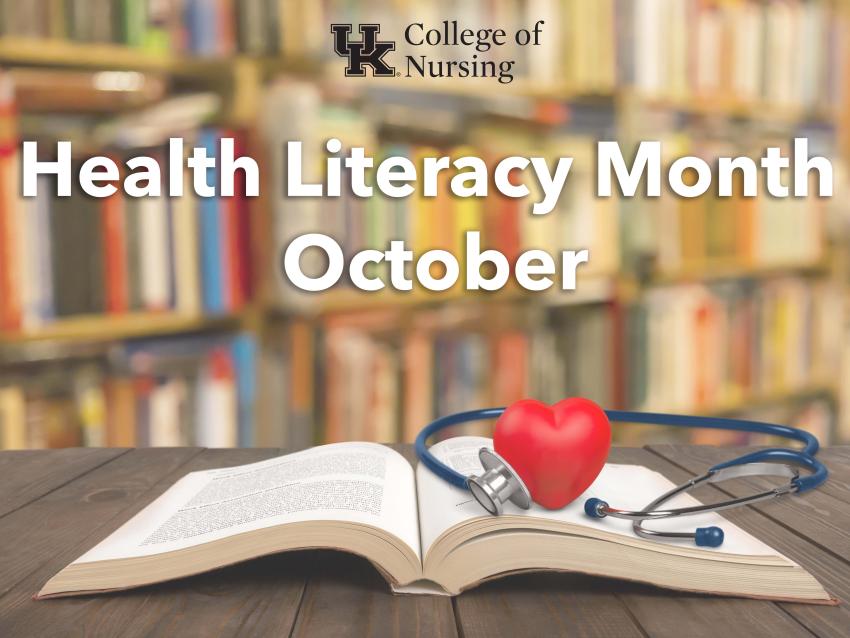
Health Literacy Month Q&A with Nurse Scientist Dr. Jean Edward
October is National Health Literacy Month— a time to help educate both healthcare providers and patients about what health literacy is and how improving health literacy skills can improve the overall health of a community. To help gain a better understanding about health literacy, we sat down with the University of Kentucky College of Nursing’s Dr. Jean Edward, who as a nurse scientist focuses her research efforts on health equity, policy and health and financial literacy.
Q. What does “health literacy” mean?
“Health literacy” is defined in two ways – one to represent an individual’s ability to use health information and one to acknowledge an organization’s responsibility to convey health information.
- “Personal health literacy” is the degree to which individuals have the ability to find, understand, and use information and services to inform health-related decisions and actions for themselves and others.”
- “Organizational health literacy” is the degree to which organizations equitably enable individuals to find, understand, and use information and services to inform health-related decisions and actions for themselves and others.
Q. Why is health literacy important?
Inadequate health literacy has shown to be associated with lower uptake of preventive health seeking behaviors (such as cancer screening), higher use of emergency department services, limited knowledge of disease prevention, treatment and risk perception, and lower perceived quality of life.
Q. What are some factors that influence a patient’s health literacy?
Sociodemographic factors, such as low educational skills. Limited English Proficiency. Healthcare providers using complex language and words that patients don’t understand. It’s important to keep in mind that health literacy can be dynamic and change based on the environment or settings, especially the healthcare setting where the stress of the illness/diagnosis itself can impact one’s health literacy.
Q. Are there tools/resources providers can use to assess a patient’s health literacy level and language assistance needs?
The most commonly used tool to measure health literacy in healthcare settings is the Newest Vital Sign. Providing interpreter services for limited English proficiency (LEP) patients is required by law for healthcare providers or insurance companies receiving federal assistance. Unfortunately, the use of the NVS/other health literacy tools and interpreter services are not standardized and/or used consistently among healthcare providers.
Q. What is the best way a provider can help improve understanding in patients with limited health literacy?
The simplest way to improve understanding in patients with limited health literacy is to use plain or basic language in all communications, including written materials. Organize information so that the most important points are emphasized. Break down complex information into understandable sections. Define technical or medical terms using plain language. Also, it is important to provide as many opportunities as possible to let patients ask questions and create an atmosphere where patients feel they have the time to ask questions.
Q. Where can patients and/or providers go to learn more about health literacy?
There are numerous resources are available to help patients and providers. Here are some reputable sites that I recommend:
- AHRQ universal precautions toolkit: https://www.ahrq.gov/health-literacy/improve/precautions/index.html
- Health Literacy Research and Practice journal: https://journals.healio.com/journal/hlrp
- Health Literacy Kentucky https://kyvoicesforhealth.org/health-literacy-kentucky/
- Health Literacy toolshed is a database of health literacy measures: https://healthliteracy.bu.edu/
Jean Edward PhD, RN, CHPE, is an assistant professor at the University of Kentucky College of Nursing and nurse scientist for UK HealthCare’s Markey Cancer Center.
